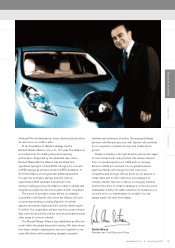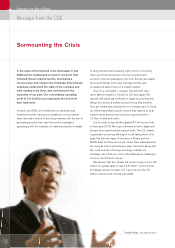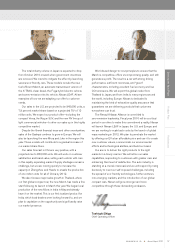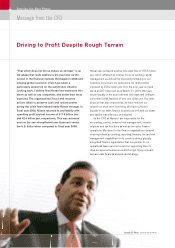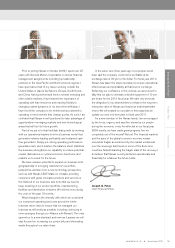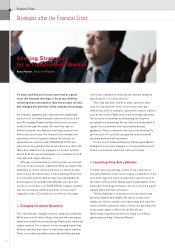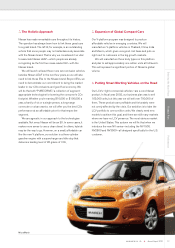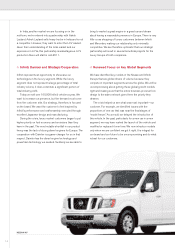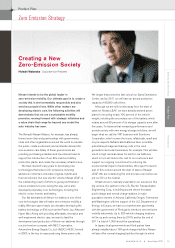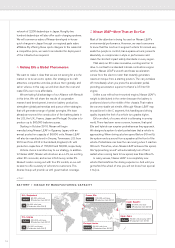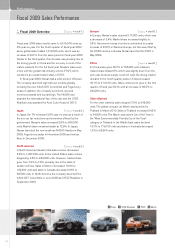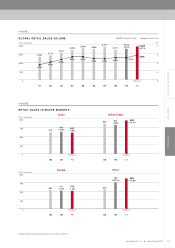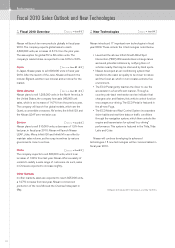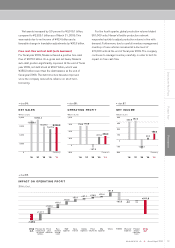Nissan 2010 Annual Report Download - page 17
Download and view the complete annual report
Please find page 17 of the 2010 Nissan annual report below. You can navigate through the pages in the report by either clicking on the pages listed below, or by using the keyword search tool below to find specific information within the annual report.
gy
Zero Emission Strate
Entering the Next Phase Product Plan Performance
15Annual Report 2010NISSAN MOTOR CO., LTD.
Product Plan:
Hideaki Watanabe Corporate Vice President
Creating a New
Zero-Emission Society
Nissan intends to be the global leader in
zero-emission mobility. Our ultimate goal is to create a
society that is environmentally responsible and also
enriches people’s lives. While other makers are
developing electric cars, the following activities will
demonstrate that we are a sustainable mobility
promoter, moving forward with strategic initiatives and
a value chain that range far beyond any model the
auto industry has seen.
The Renault-Nissan Alliance, for example, has already
formed more than sixty partnerships with governments,
cities and other organizations around the world to educate
the public, create excitement, and accelerate demand for
zero-emission cars. Many of these governments are
providing purchasing subsidies and low-interest loans to
support the introduction of our EVs, build our battery
production plants, and create the necessary infrastructure.
We have devoted many years to developing new
technologies that reduce CO2 emissions, including
advances in internal combustion engines, hybrids and
fuel-cell vehicles. Our new electric vehicle, Nissan LEAF, is
the outstanding result of efforts to go beyond that and
reduce emissions to zero. Along the way, we’ve also
developed proprietary core technologies, including the
electric motor, inverter and battery.
Our flat laminated-cell lithium-ion battery is one of the
core technologies that will make zero-emission mobility a
reality. We have spent nearly two decades developing the
battery technology on EVs such as the Prairie Joy, Altra and
Hyper Mini. Along with providing affordable, innovative and
well-engineered electric cars, we want to lead the
development and production of lithium-ion batteries through
our joint-venture company with NEC Corporation,
Automotive Energy Supply Co., Ltd. (AESC). AESC, formed
in 2007, is the key to mass-producing these power cells.
We began trial production last July at our Zama Operations
Center, and by 2011 we will have an annual production
capacity of 90,000 units there.
Although we are still months away from the start of
sales for Nissan LEAF, we have already devised action
plans for recycling nearly 100 percent of the vehicle
weight, including the secondary use of the battery, which
retains around 80 percent of its storage capacity even after
five years. To harness that remaining performance and
provide society with new energy storage solutions, we will
begin what we call the “4R” business with Sumitomo
Corporation, which covers the reuse, refabricate, resell and
recycle aspects. Refabricated batteries have incredible
potential as storage and backup cells in the wind
generation and solar businesses, for example. This will also
result in high residual values for electric-car batteries,
which in turn will reduce the cost to our customers and
support our ongoing commitment to reducing the
environmental impact of automobiles. We expect to launch
part of this venture around the start of sales of Nissan
LEAF. We are considering the end process even before we
put our EV on the market.
Infrastructure is naturally essential to our success in this
big venture. Our partner in the U.S., Electric Transportation
Engineering Corp., is building around eleven thousand
quick-charge and normal-charge stations in major
population centers in Arizona, California, Oregon, Tennessee
and Washington with the support of the U.S. Department of
Energy. In Europe, we have a comprehensive partnership
with the government of Portugal to introduce zero-emission
mobility nationwide. Up to 320 vehicle-charging locations
will be up and running there by 2010, and by the end of
2011 a total of 1,300 should be operational.
In Japan, local governments and third parties have
already installed about 160 quick-charge facilities. Nissan
will also offer normal charging facilities through its entire


